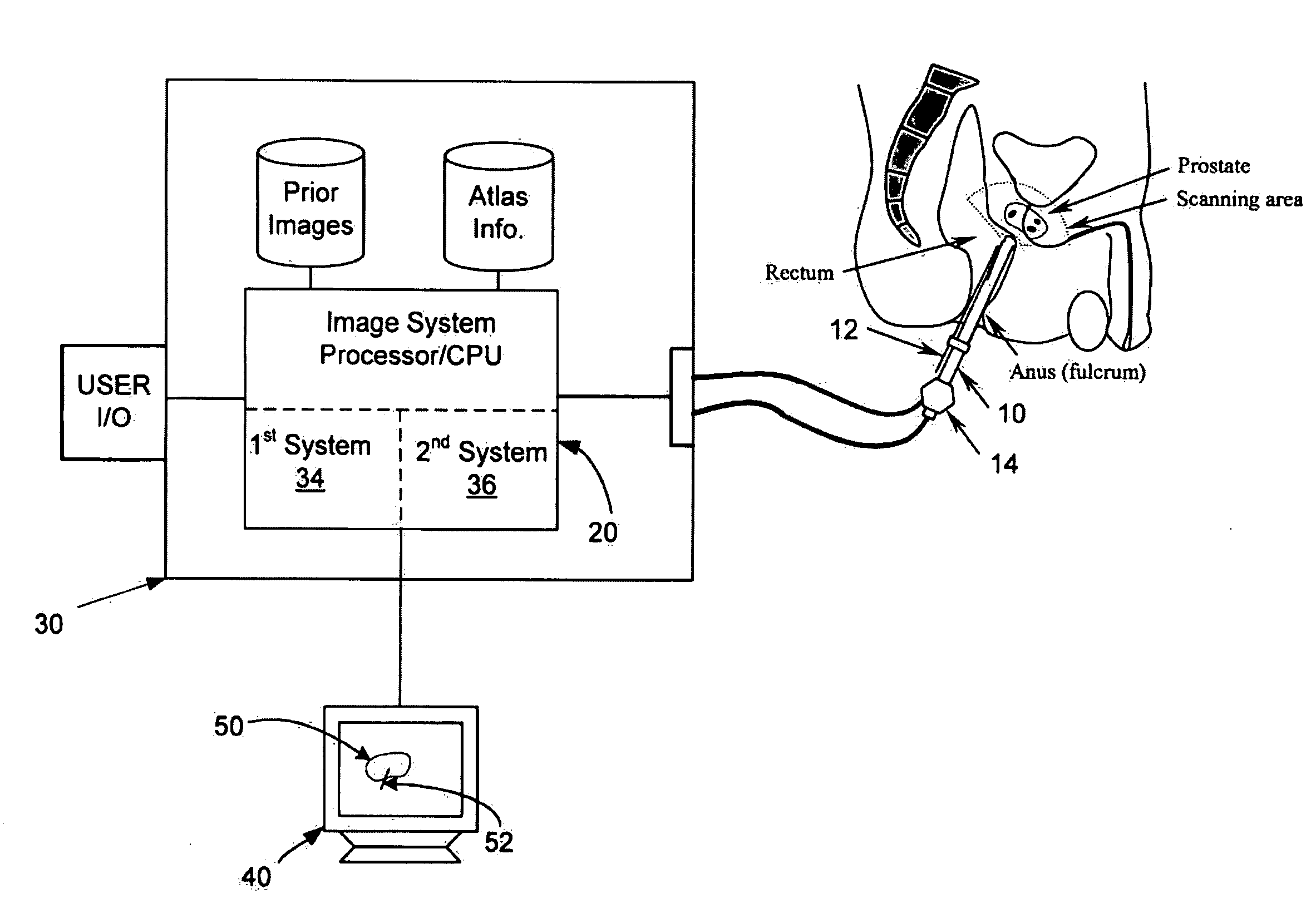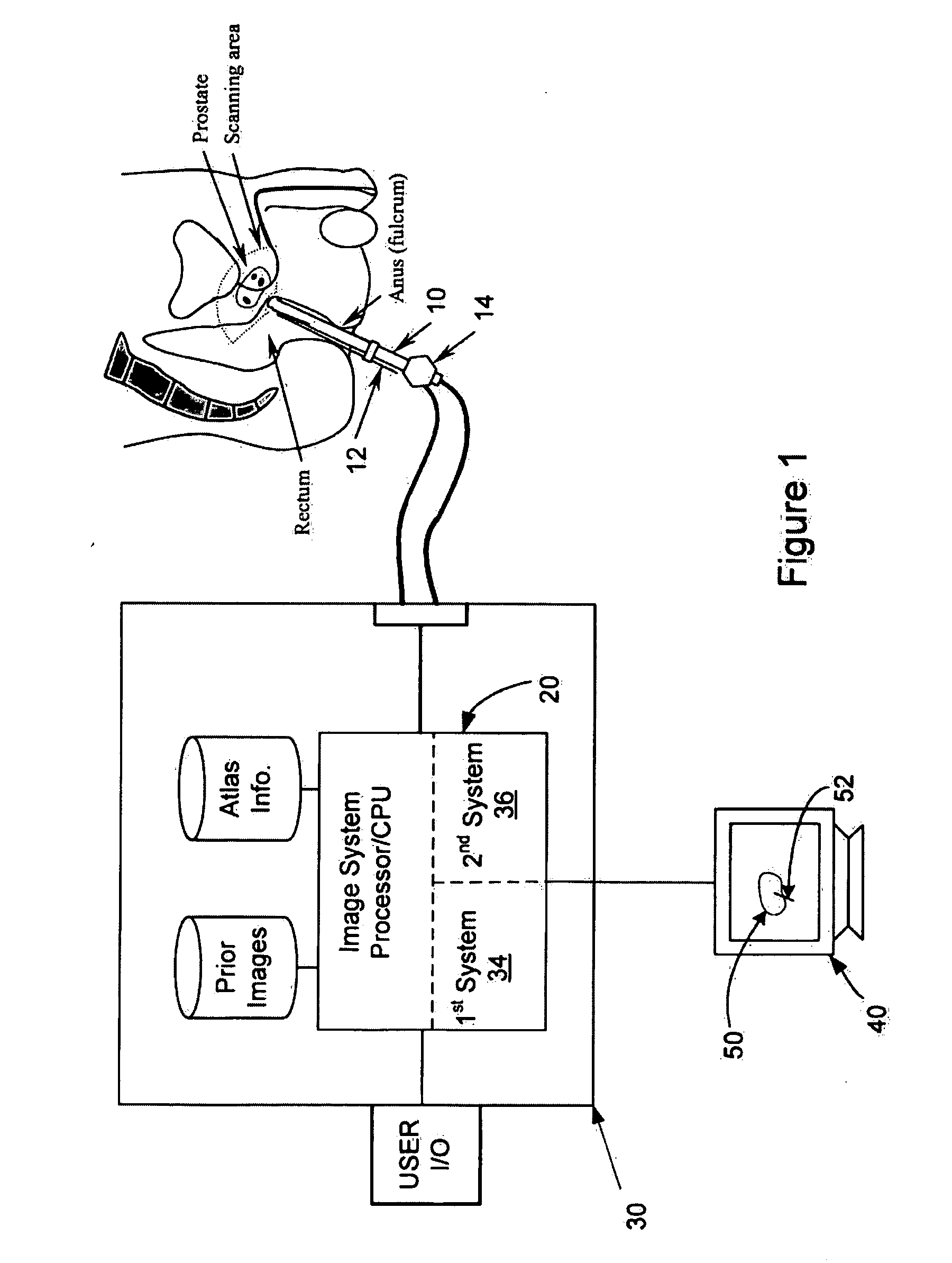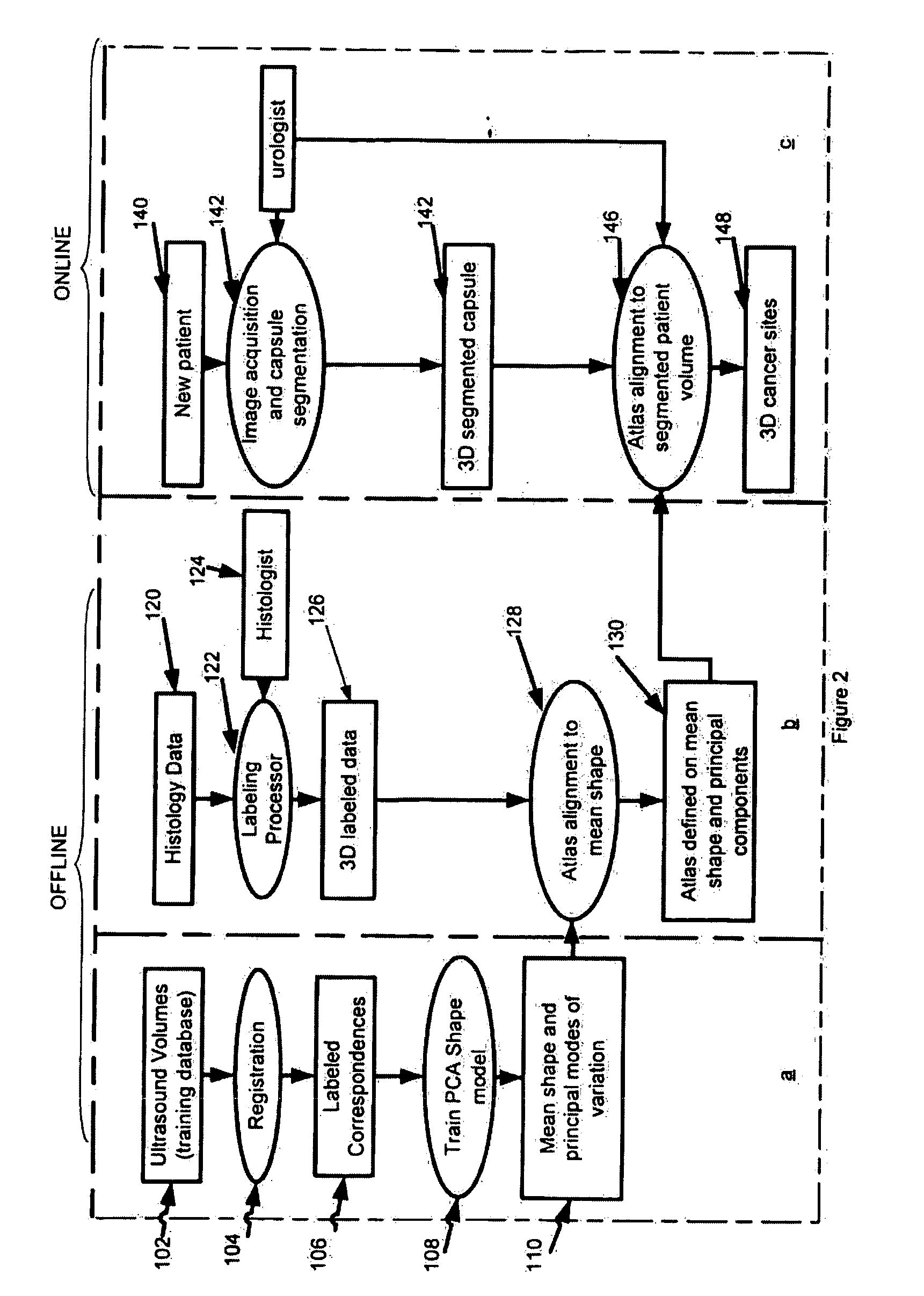[0005]Provided herein are systems and methods (i.e., utilities) that allow for providing an
image guidance system that uses two knowledge-based systems for improving the
tissue culture and
workflow for urologists. The utility not only uses one knowledge-based system to provide guidelines for
biopsy site selection, but also confirms the confidence in
site selection through another knowledge-based system. In this regard, the utilities may be implemented in
processing systems that are integrated into
medical imaging devices and / or that are interconnected to the
medical imaging devices and operative to receive data there from. The ability to select and confirm
biopsy site selection reduces the need to sample non-suspicions regions and thereby reduces patient discomfort while improving biopsy accuracy. Further such a utility may be performed on-line, for example while a patient remains in view of an imaging device. Accordingly, this may allow for guidance to one or more biopsy sites of interest without repositioning the patient.
[0006]Another relates method is to use a knowledge-based system to guide
tissue culture extraction. The acquired data is then fused using multi-modality image
data set or warped using a knowledge-based system such as an ATLAS. But a knowledge-based system may only be used as a
guideline in the absence of a validation / confirmation system. The present invention presents a new
image guidance system for performing biopsy which can overcome the above-referenced problems and improve
prostate cancer diagnosis. In presented utility, the suggested biopsy locations from a knowledge-based system are confirmed by another knowledge-based or
learning based system such that higher confidence level can be established in selecting the biopsy sites.
[0009]In one arrangement, the second knowledge-based system may perform an image textural analysis and classification for the initial regions of interest. The confirmation procedure may confirm whether the selected target has textural characteristics or other features that are similar to the textural characteristics and or features of histological samples having one or more classified malignancies, tumors and / or cancers. In one arrangement, feature vectors are extracted from the regions of interest by
image processing algorithms. The feature vectors may include, without limitation, statistical features, gradient features and / or Gabor filtering features. Features with the most
discriminant power may selected through a
feature selection algorithm. Further multiple features may be selected for each
region of interest. As a result, multiple features from each region may be compared with predetermined features associated with known cancerous, malignant and / or benign histological samples. Where multiple regions of interest are considered, multiple features are extracted and / or multiple features are compared,
processing may be performed in
parallel processing paths to reduce the
processing time required to confirm one or more regions of interest.
[0010]In accordance with another aspect a system and method (i.e., utility) for training and utilizing a
biopsy site confirmation system is provided. The utility may include the following steps, without limitation: (1) generating tumor
ground truth locations or regions; (2) extraction of information known to the
tumor region (e.g.,
feature extraction); (3)
feature selection; and / or (4) classifier training. The following steps may be included in the online
classification procedure of the biopsy site confirmation utility: (1) extracting information known to the suggested biopsy regions (ROIs) which provided by a first knowledge-based system; and / or (2) classification and confirmation of the regions of interest using trained classifier. The classification system may be an online system and can achieve real-time to assist urologists in
prostate cancer diagnosis. The multi-threading technique and multi-resolution technique are designed in the
workflow.
[0014]In one arrangement, the classifier training procedure can
train a system /
machine based on the urologists' prior knowledge and known
ground truth, so the trained system /
machine can be used to classify and confirm a new unknown region in the system. One classification method applied aims at minimizing the bound on the
generalization error (i.e., error made by the
learning machine on data unseen during training) rather than minimizing the training error over the
data set.
 Login to View More
Login to View More  Login to View More
Login to View More 


